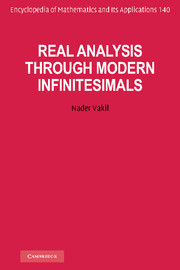Book contents
Appendix D - The syntax of mathematical languages
Published online by Cambridge University Press: 05 January 2013
Summary
When we read a statement, we normally ignore its syntax (the formation pattern of sentences and phrases) and focus our attention on its meaning. But much can be gained if we also pay some attention to the syntax of mathematical statements. Thus our goal in this appendix is to direct the reader's attention to some elements of the syntax of mathematical statements. Our discussion of this subject will be exploratory and informal rather than prescriptive and formal. We will proceed by looking at some examples of symbolically written statements in the language of the real numbers. We assume that the reader already has some experience in translating English statements about the real numbers into statements written in mathematical symbols. However, as we are pursuing the main goal of this section we will provide a brief review of such translations as well.
Constituents of mathematical statements
The language of a mathematical theory is, for the most part, a fragment of a natural language (like English or Persian). In a mathematical language the words “condition” and “statement” (used synonymously in this book) refer to the same sort of syntactical structures as does the phrase “declarative sentence” in the case of a natural language.
- Type
- Chapter
- Information
- Real Analysis through Modern Infinitesimals , pp. 544 - 553Publisher: Cambridge University PressPrint publication year: 2011



